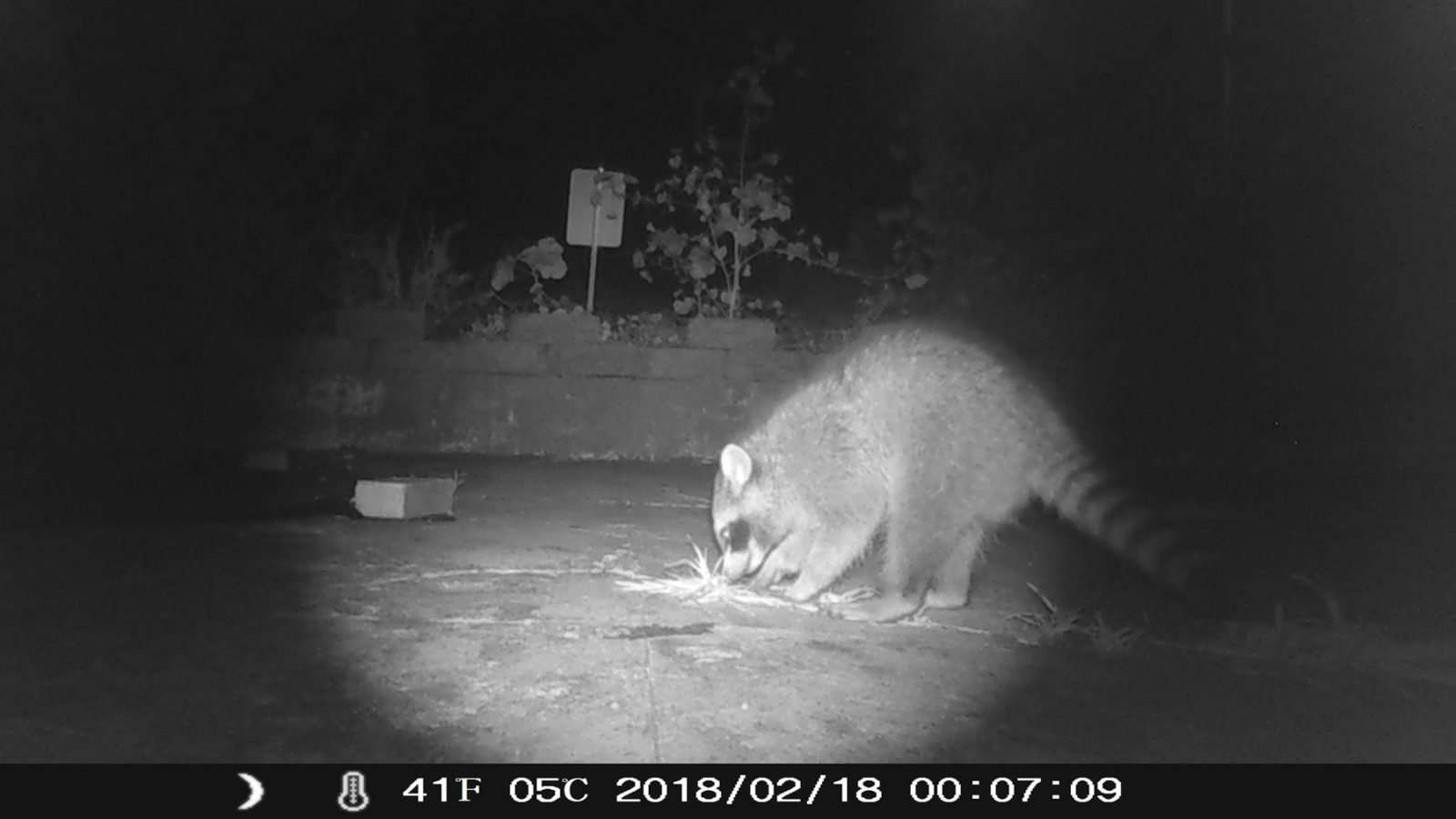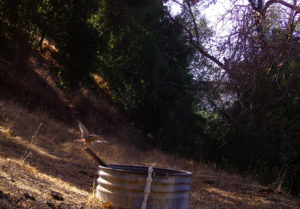
They live among us. Sometimes we find them in our garbage, or stealing some leftover pet food outside. They are, of course, raccoons. For some, they’re a common backyard pest that has to be dealt with, while others find their masked faces and strangely human hands to be charming. No matter what your opinion may be, you’ll probably end up seeing a raccoon in your yard sooner or later.
Michelle Unger’s relationship with urban raccoons started with a metal drain cover being mysteriously flipped over at night. The grate was too heavy to be lifted by water or wind, so she wondered just who or what the culprit might have been. After purchasing a trail camera and placing it in her yard in San Francisco, she soon found out who the craft criminals were: a mother raccoon and her three kits.
Three to four times a week, the raccoons would come to visit and drink from underneath the drain. Unger has never seen the raccoons in person, but they’ve noticed the trail cam, and frequently seem to be curious about it, approaching it for a good sniff. Thanks in part to her visitors, she is now in the process of making her yard a California Certified Wildlife Habitat.
Californians have been living alongside suburban raccoons since at least the 1920s. Their population has exploded in recent years, firmly cementing them as a nuisance in the minds of many. Suzanne MacDonald, a biologist and psychologist at York University in Canada, thinks that the landscape and hazards of living in an urban environment might actually make raccoons smarter. In an experiment MacDonald ran over several years, urban raccoons did markedly better than their rural companions in solving a puzzle to get food. “These data support the tantalizing possibility that the anthropogenic selection is at work, with our cities—and human behavior—selecting for particular cognitive abilities in raccoons,” MacDonald and Sarah Ritvo wrote in a 2016 article in Comparative Cognition & Behavior Reviews.
It’s clear that raccoons are constantly adapting to living alongside humans. Unger’s backyard is completely closed off, yet the raccoons are able to navigate to it by climbing fences and navigating her neighbor’s roofs, returning again and again to an available source of water.
Part of their adaptability lies in their flexible diet. When you’re a raccoon, just about anything is on the menu. They’ll eat fruits and veggies, insects and fish, but they’ll also eat your cat food — sometimes they’ll go in through your cat door to get it. Infamously, they’ll also eat your garbage, if given an opportunity, knocking over cans in the middle of the night to get what’s locked away.
Raccoons are here to stay, another species that we have to learn to live with. But covering up entrances, sealing trash cans, and making sure that there are no sources of food and water in your yard are a good way to keep them out.
Perhaps the raccoons are giving us a chance to embrace seeing nature in unlikely environments, as Unger did. By learning to survive alongside them, we can learn how to further co-exist with other species.




